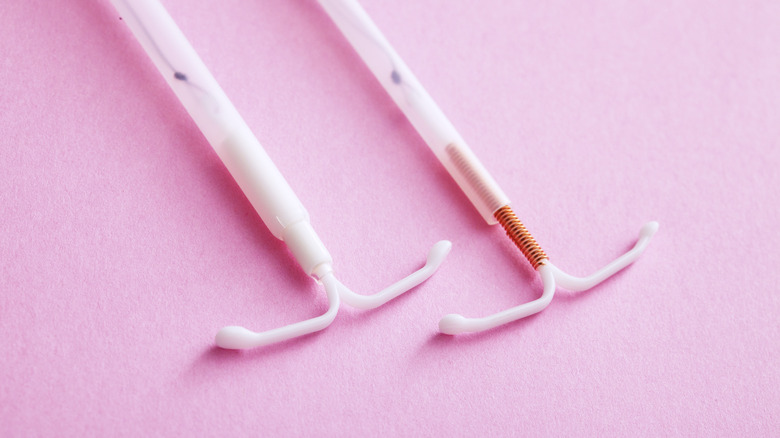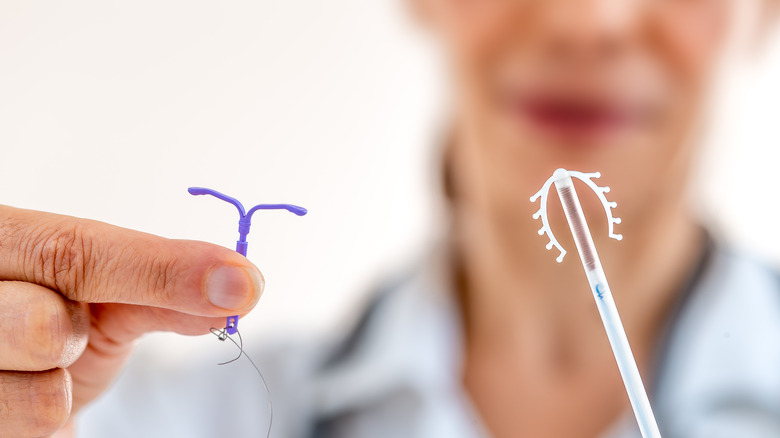What Happens If You Don't Get An IUD Removed After It Expires?
The IUD, short for intrauterine device, is an excellent form of birth control that's long-term, reversible, and very effective, according to Planned Parenthood. But it has an expiration date, so while some IUDs can stay in your body for up to 12 years, they still need to be removed when they've reached their expiration.
There are two kinds of IUDs: hormonal IUDs and the copper IUD. An IUD is a plastic piece that's shaped like a T and inserted into the uterus to prevent pregnancy. Hormonal IUDs release progestin, a synthetic form of the hormone progesterone, that thickens cervical mucus to prevent sperm from reaching an egg, as well as sometimes stopping ovulation altogether. Meanwhile, the copper IUD works by interfering with the movement of sperm so they can't reach an egg.
There are a few different types of hormonal IUDs that last anywhere from three to seven years, while the copper IUD can remain in place for up to 12 years. IUDs can be removed at any time.
Why it's important to remove an IUD on time
If you're having unwanted side effects or want to become pregnant, your doctor might recommend removing the IUD (via Medical News Today). But it also needs to be removed by the end of its lifespan, which can be done quickly and easily in a doctor's office. If needed, you can easily have it replaced right away.
If an IUD remains intact past its expiration date, the risk of infection increases, warns Medical News Today. If an infection becomes severe, it could cause infertility. IUDs will also lose their ability to prevent pregnancy, so they may not be an effective form of birth control if you don't get them removed after they expire.
An IUD should be removed by a doctor — it's not recommended to try to remove it yourself at home (via WebMD). Your doctor will insert a speculum and use a tool to gently pull on the strings of the IUD. The arms of the IUD will fold up as it slides out. It generally only takes a few minutes, but you may experience mild cramps as it's removed. There's a slight chance of complications, such as the IUD becoming stuck to the uterine wall, and your doctor may need to use a thin, lighted scope and special tools to remove it in this case.


